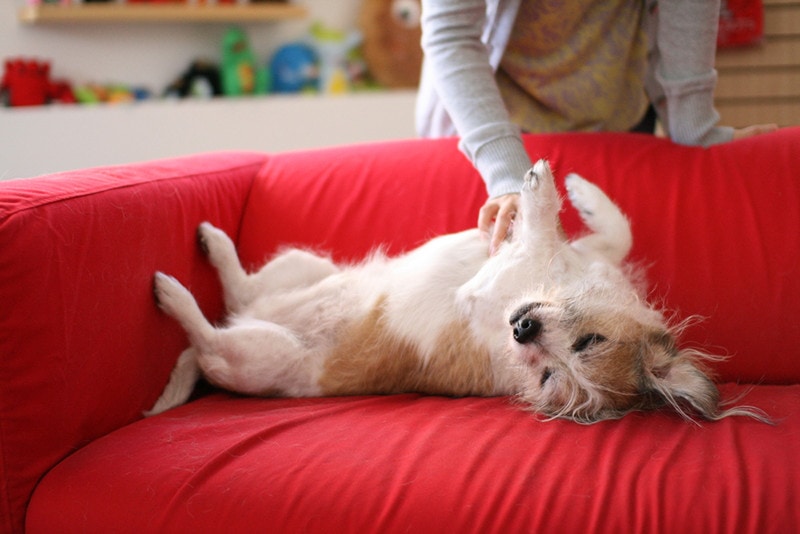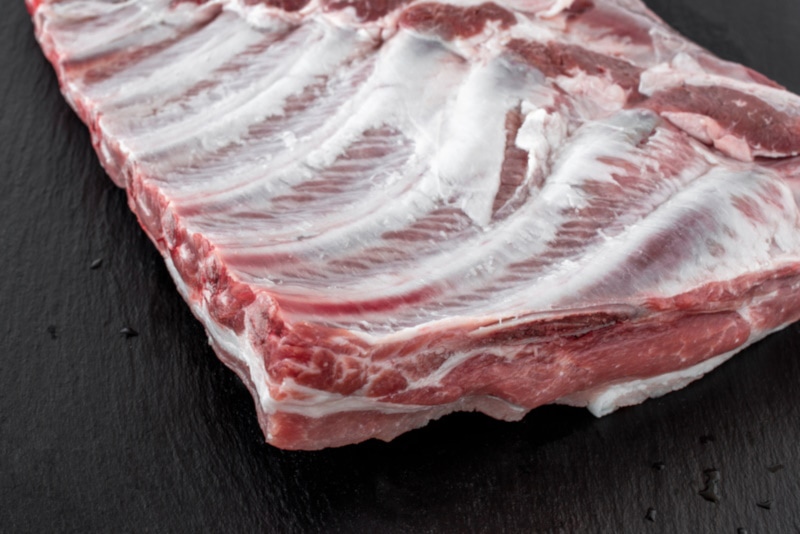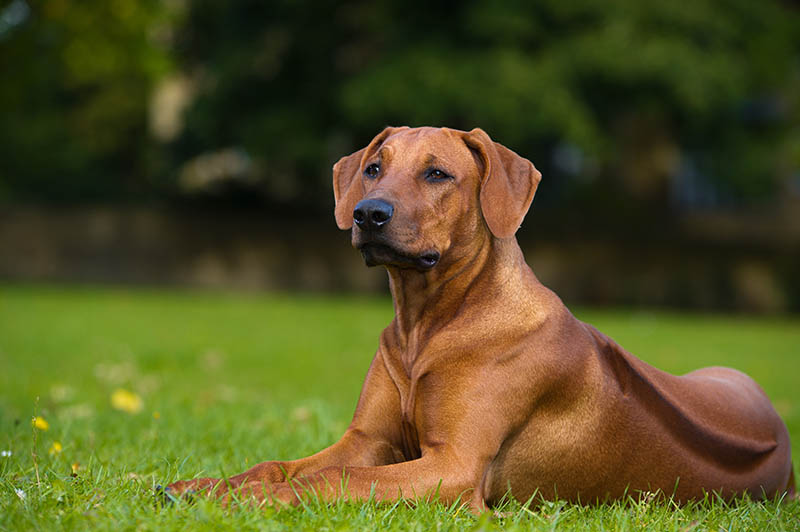Basset Hound vs Bloodhound: The Main Differences (With Pictures)

Updated on
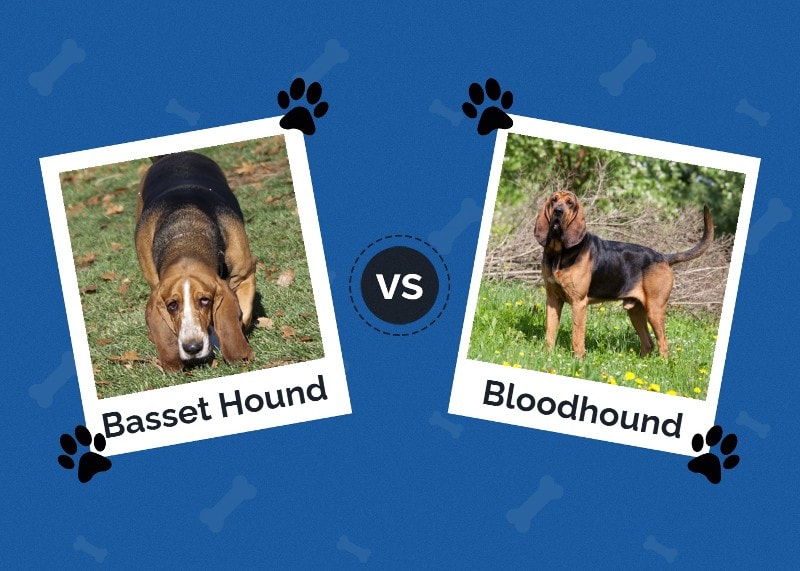
Basset Hounds and Bloodhounds are both members of the hound family. They were both bred to hunt animals by scent and, because they are members of the same group of dogs, they do share some similar traits. However, there are also some major differences, not least the size of the two.
The Bloodhound is larger than the Basset Hound, but both these breeds require plenty of exercise without needing strenuous physical activity. Below, we look at both breeds and determine the differences between the two so that you can decide which one might be best for you, your family, and your circumstances.
Visual Differences
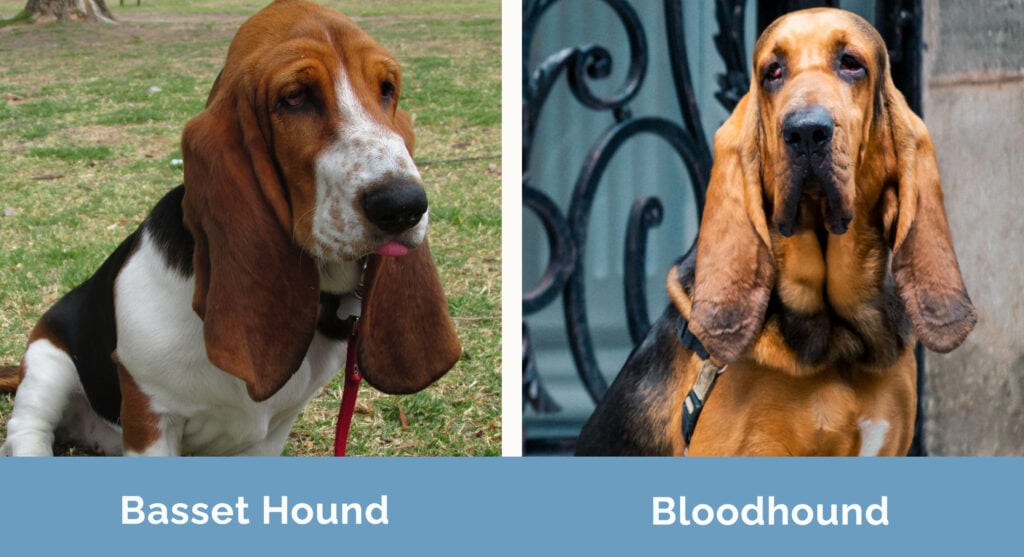
At a Glance
- Average height (adult): 12–15 inches
- Average weight (adult): 40–80 pounds
- Lifespan: 10–12 years
- Exercise: 1+ hours a day
- Grooming needs: Moderate/easy
- Family-friendly: Yes
- Other pet-friendly: Usually
- Trainability: Intelligent, but can be difficult to train and somewhat stubborn
- Average height (adult): 23–27 inches
- Average weight (adult): 80–160 pounds
- Lifespan: 10–12 years
- Exercise: 2+ hours a day
- Grooming needs: Moderate/easy
- Family-friendly: Yes
- Other pet-friendly: Usually
- Trainability: Intelligent but stubborn and independent, can be a challenge
Basset Hound Overview
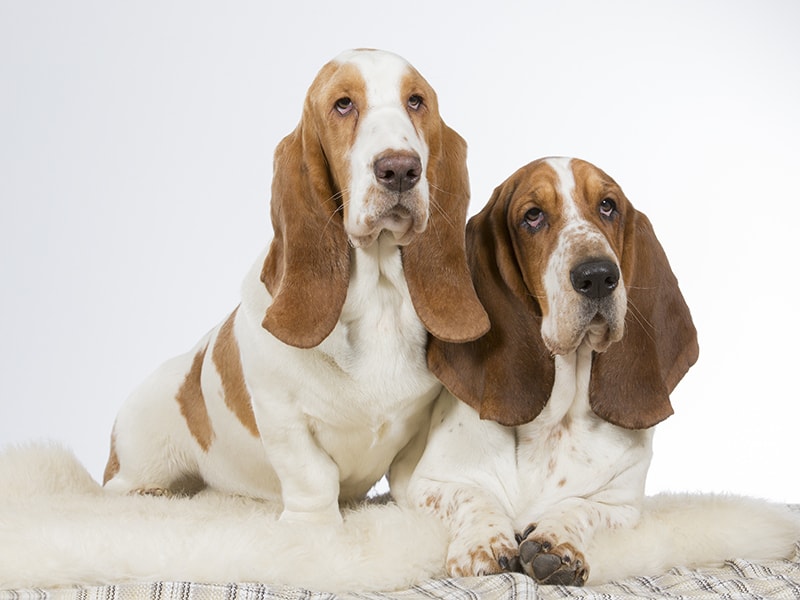
Basset Hounds are a French breed of hound dog. They likely originated from the St. Hubert Hound and were bred at least as far back as 1585. Experts believe that the breed originated after a mutation in the St. Hubert breed led to a short-legged version of the dog being born. It is possible that this mutation was then intentionally bred, subsequently creating what we now know as the Basset Hound.
The Basset became popular with members of the aristocracy in France and a pair were sent to England in 1866. It wasn’t until 1874 that the breed was promoted in England, and gained popularity there, however. In 1882, the UK Kennel Club recognized the breed and, in 1885, the American Kennel Club also started registering Basset Hounds, although it did not formally recognize the breed until 1916.
Personality / Character
The Basset Hound is a scent hound. It is a very mild-mannered dog that will usually get along with just about everybody and most animals, too. In fact, the Basset can be a very lazy dog and may only get excited at the prospect of following a trail. It is a pack dog, which means that it not only benefits from being around other dogs or human companions, but it can struggle if left alone for too long.
Training
Early socialization and training are important for this breed. Without socialization, the dog may become shy around strangers, and because the breed can be lazy, easily distracted by any smell, and even a little on the stubborn side, early training is vital. These attributes also make the Basset Hound something of a challenge to train well.
Health & Care
The short legs and heavy weight of the Basset Hound can lead to some health problems, and there are several illnesses and conditions that the breed is especially known for. Bloat is common in deep-chested dogs like the Basset so feed small amounts more often, rather than single large meals. Other common problems include von Willebrand’s Disease, Panoestitis, and Glaucoma. Look out for ear infections and possible eye problems, too.

Suitable For:
Families that like long walks and that are willing to take part in scent sports. The Basset really does benefit from taking part in these games. The breed is not ideal for life in an apartment because it does tend to howl, which can upset close neighbors.
- Friendly breed gets on with the family
- Doesn’t require heavy grooming
- Will usually get along with other dogs and even cats
- Can have a tendency to howl
- Can be stubborn and a little challenging to train
Bloodhound Overview
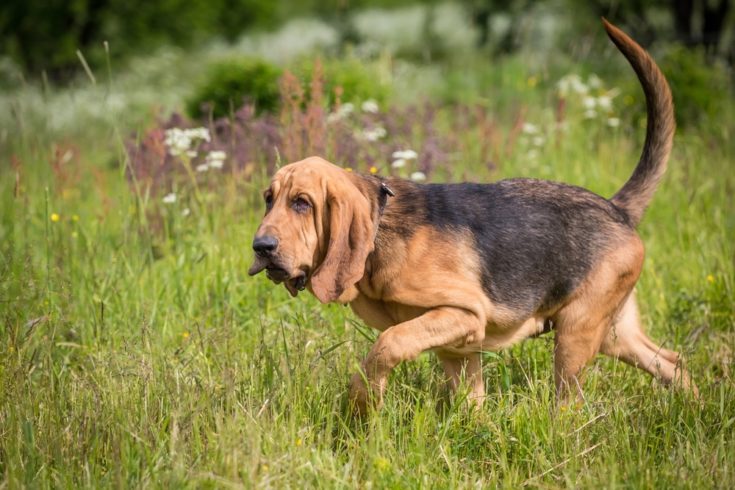
The Bloodhound is also a French hound breed. The Bloodhound may be an even older breed than the Basset with the first mention of it being in the poem William of Palerne, which referenced the Bloodhound and described it as being a hunting dog that trailed two people dressed as bears. The name Bloodhound does not come from the dog’s ability to trace the scent of blood but because it was popular with those of noble blood and was therefore considered to be a “blooded” hound.
By the 18th Century, the dogs were being used in England not only for hunting but also to track down criminals. The breed was further perfected in England before making its way to America during colonial times. They gained an unfair reputation for being vicious hounds, which saw their popularity decline until the late 19th Century when they started competing in prestigious shows and exhibitions. However, they do still remain a somewhat uncommon breed today.
Personality / Character
As well as being highly skilled and prized for their ability to track scents, therefore seeing them used as service dogs and police dogs around the world, Bloodhounds can also make good family pets and companions. The breed tends to get along very well with family and friends but can be quite shy around strangers. And, if the Bloodhound gets a scent that interests it, it can be very difficult to drag its attention away.
Exercise
The Bloodhound is quite a slow but resolute mover, typically moving with its nose close to the ground so that it can pick up and follow scents. However, while the breed is not known for being quick it does have high energy requirements and owners are advised to provide at least 2 hours of exercise a day.
Training
Because Bloodhounds can be somewhat timid around strangers, owners must socialize their Bloodhounds when they are puppies. Introduce them to different people and new situations so that they not only learn to deal with these situations but learn that new things aren’t worthy of being afraid of. Training can be tricky. The Bloodhound is quite independent, despite being a pack dog and enjoying companionship. And, it can be difficult to get the sustained attention needed for a good training session. Be consistent and use positive reinforcement to get the best results.
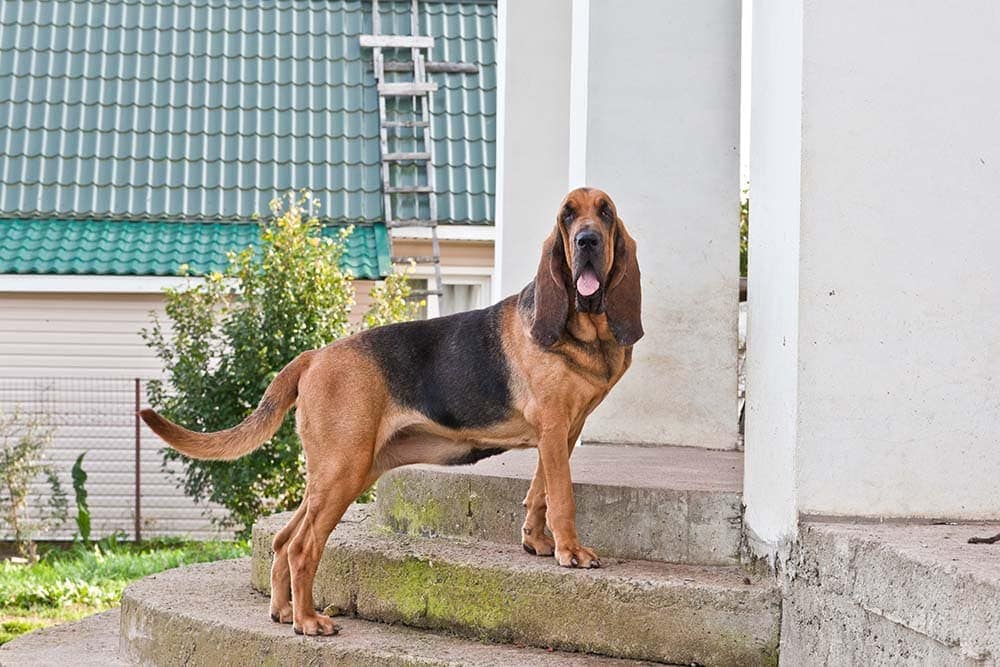
Health & Care
The long ears of the Bloodhound are prone to infection while the size of the dog means that it can suffer from hip dysplasia. When buying a Bloodhound puppy, ensure that its parents have been screened for dysplasia to help reduce the likelihood of this developing. Ectropion and entropion, which are deformities of the eyelids are also a concern, so keep an eye on your Bloodhound’s eyes and consult with a vet if they start to look like they are causing discomfort or pain.
Suitable For:
The Bloodhound’s daily exercise requirements mean that this breed is best suited to a family that has plenty of time for exercise, as well as the patience needed for training.
- Friendly and loyal with family
- Exceptional scent hound skills
- A rare breed
- Can be stubborn, making training a challenge
- Prone to some joint, eye, and ear problems
Basset Hound vs Bloodhound
Size and Appearance
Although the breeds do share some physical similarities, there is one obvious difference, which is the height of the two breeds. The Bloodhound is generally a much larger dog than the Basset Hound and will grow to twice the height and roughly twice the weight of the Basset. Both have droopy ears, soulful eyes, and big chests, and the choice really comes down to whether you prefer the short legs of the Basset or the fuller size of the Bloodhound.
Exercise Requirements
Neither breed is especially quick nor very agile, but both do have moderate to high exercise requirements that need to be met. If you don’t provide these breeds with regular exercise, they can become lazy and will spend their days laying around the house, putting on excess weight. The Basset, because of its smaller size, requires a little less exercise than the Basset.
Training and Socialization
Both breeds enjoy scent work and scent sports, which can provide a good way for them to exercise and use their incredible olfactory senses. They constantly surprise with their ability to smell and track, and they really do enjoy the opportunity to do this. Both breeds also benefit from early socialization, although this is especially important for the Bloodhound which can be a little timid around strangers. When it comes to training, both breeds pose something of a challenge. They aren’t disobedient dogs, as such, but it can take a lot to get and keep their attention during training. And if they catch a scent that they find particularly interesting, everything will become even more difficult.
Family and Friends
Both breeds tend to get along very well with family and will usually get along with regular visitors. Neither breed is known to be aggressive, but the Bloodhound can be sensitive around new people. Both will get along with other family pets, although introductions should always be gradual and sensitive.
Which Breed Is Right for You?
Bloodhounds and Basset Hounds share a lot of similar traits, although the most obvious difference is in the size of the dogs. The Bloodhound is much taller and heavier than the Basset, although the Basset is by no means a small dog, having the highest bone weight per pound of any dog breed. You will need to provide regular exercise with dogs of either breed, and both enjoy the opportunity to show off their scenting skills so they do benefit from scent sports.
Start training and socialization as early as possible and consider a different breed if you live in close proximity to your neighbors.
Featured Image Credit: (L) Images by Dr. Alan Lipkin, Shutterstock | (R) Lenkadan, Shutterstock




